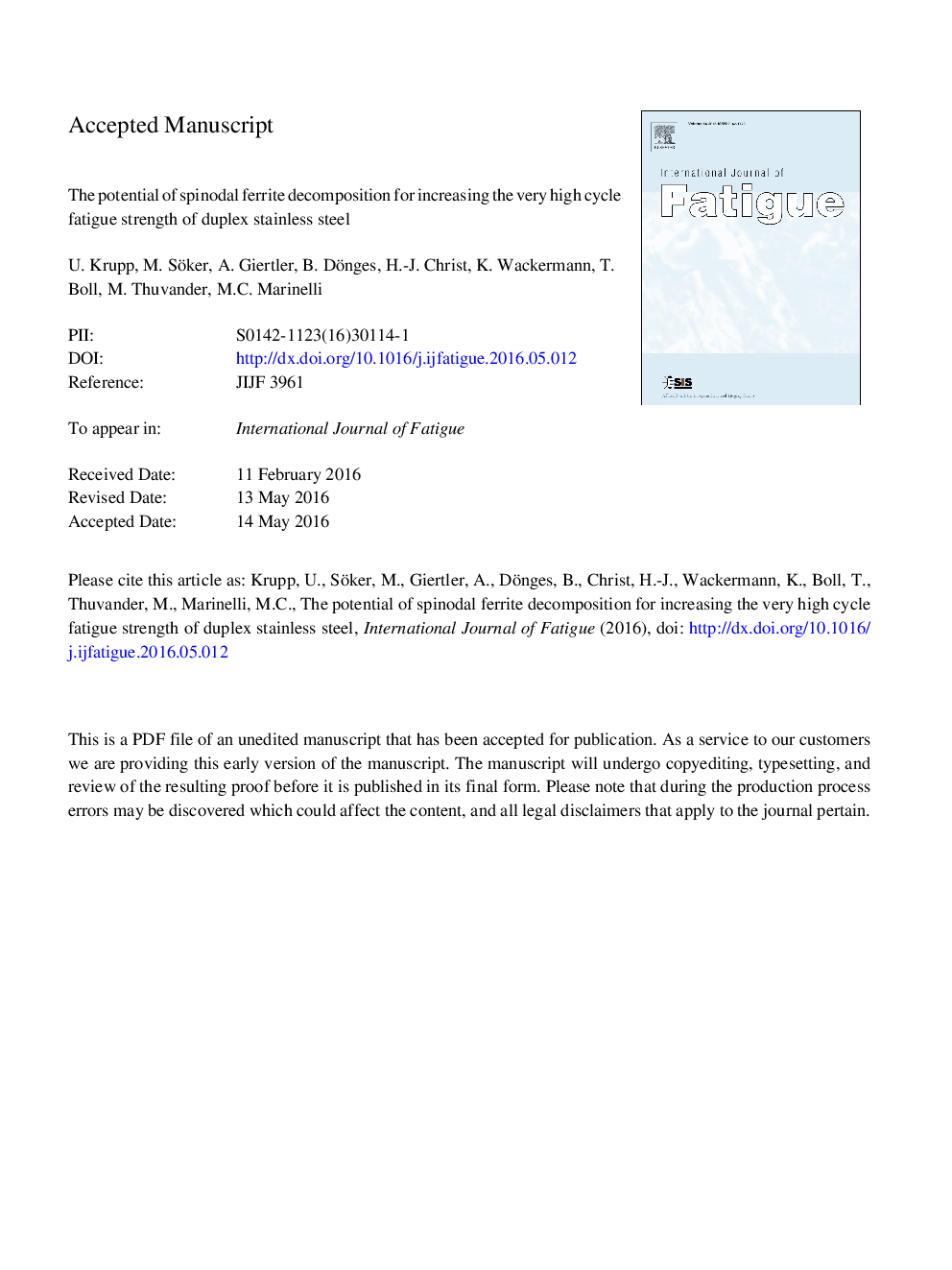| Article ID | Journal | Published Year | Pages | File Type |
|---|---|---|---|---|
| 5015310 | International Journal of Fatigue | 2016 | 26 Pages |
Abstract
Duplex stainless steels (DSS) have become candidate materials for structural applications, where conventional austenitic stainless steels fail due to very high cycle fatigue (VHCF) in combination with corrosive attack. It seems that DSS exhibit a fatigue limit, which can be attributed to the two-phase austenitic-ferritic microstructure. Ultrasonic VHCF testing revealed that the phase boundaries are efficient obstacles for the transmission of slip bands and microstructural fatigue cracks up to 109 cycles and even beyond. The barrier strength is determined by the misorientation relationship between neighbouring grains but also by the strength of the individual phases. By thermal treatment at 475 °C, spinodal decomposition of the ferrite phase results in the formation of Cr-rich αⲠprecipitates. While during static loading these precipitates give rise to a loss in ductility (475 °C embrittlement), it was shown that the HCF strength can be increased and that there is also a tendency towards a beneficial effect on the VHCF behaviour. A more detailed analysis of the local plasticity sites by means of atom probe tomography (APT) revealed a dissolution of the αⲠprecipitates within operated slip bands. The dissolution might be an indication for a local softening mechanism that limits the VHCF strengthening effect of spinodal decomposition.
Related Topics
Physical Sciences and Engineering
Engineering
Mechanical Engineering
Authors
U. Krupp, M. Söker, A. Giertler, B. Dönges, H.-J. Christ, K. Wackermann, T. Boll, M. Thuvander, M.C. Marinelli,
